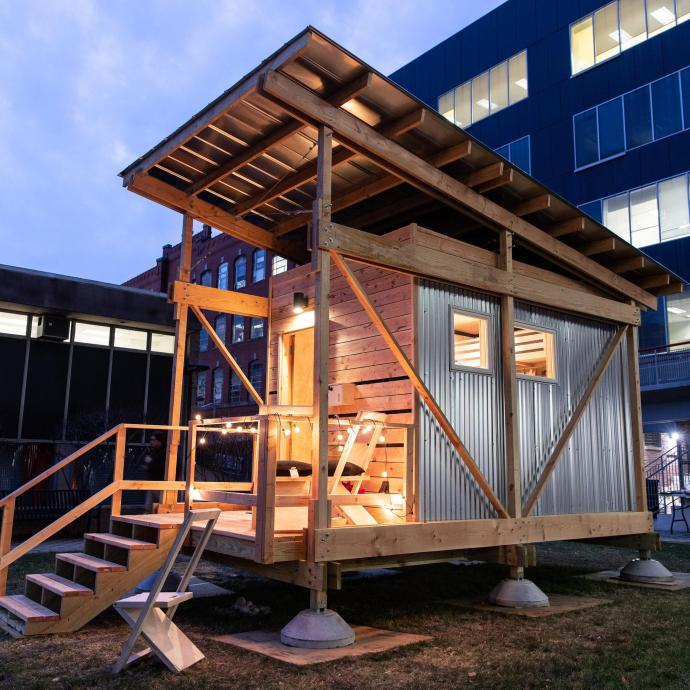The sobering lesson that storms like Irene and Sandy were not exceptions has finally sunken in, it highlighted the somber tone of the New Jersey Mayor’s Summit on Resilient Design. The grim reality of a New Jersey coastline dotted with the remains of people’s livelihoods and boarded up homes acts as a reminder; despite the passing of time, some people still haven’t picked up the pieces. For mayors and their towns on the coast, this reality brings up a number of questions and problems, both of which the Summit on Resilient Design aimed to address.
One of the chief points brought up is that the occurrence of another Sandy is not a question of if, but of when. It’s hard to imagine a state as far north as New Jersey having to erect levies and raise houses on stilts to protect from the wrath of nature, as both conjure the image of Gulf of Mexico states such as Florida or Louisiana. The thought that New Jersey didn’t need coastal defenses in addition to the mistakes of city planners and architects of the post-World War 2 development boom is what made super storm Sandy so destructive. Hurricane Irene and super storm Sandy were rather tame when compared to hurricanes typical to the Gulf of Mexico, but the mistakes of our predecessors made the damage worse.
Towns like Manville and Pequannock have a history of flooding problems; Manville sits between the junction of 2 rivers, and Pequannock built a road right on top of a river’s flood plain. When a flood occurs, the water travels through the path of least resistance, and roads are a flat route into every corner of an area as a part of their design. The local economy of Pequannock was hit particularly hard when flooding shut down the area’s large strip mall. This leads into a compounding problem where money from a tax base is needed to rebuild, but the local economy has been destroyed, which in turn shrinks the tax base and further hampers recovery efforts.
Blue collar workers in particular are hit the hardest, as many inherited their modest houses from their parents, and never bothered or could never afford flooding insurance, leaving them to pick up the pieces with what meagre pittances FEMA gave them. Indeed, many mayors expressed frustration at what seems like a vicious cycle. One mayor in particular said that New Jersey has a golden coast, inhabited by celebrities and wealthy businessmen who have no issue rebuilding after a storm because they have plenty of money to do so. Then the problem becomes helping those who don’t, but money doesn’t grow on trees, and when the problem of a devastated tax base looms overhead, one realizes that you cannot squeeze blood from a stone.
The recovery effort continues to move forward as do the resilient people of New Jersey. Yet, how do you prevent disasters like this from occurring in the future? The answer as far as NJIT is concerned lies in architects who understand the principles of resilient design. Design that accounts for future events and respects the power of natural disasters, while still allowing for large areas of land for human development.
Beyond the obvious solutions of sand bars in coastal areas, NJIT architecture professors drafted plans alongside graduate students for the construction of buffer zones of swampland, and more cost effective methods of elevating houses. Additionally, the NJIT College of Architecture and Design faced the problem of elevating and protecting some of New Jersey’s historical areas, many of which lie on the coast or in flood prone areas. It is more difficult to retrofit these houses because of the nature of their older designs. That said, the speakers presenting these plans remained confident that they would figure out solutions that would ensure that the mistakes made in the post war building boom wouldn’t be repeated, and future NJ residents could feel secure in their homes and communities, even in the nastiest of storms.






























